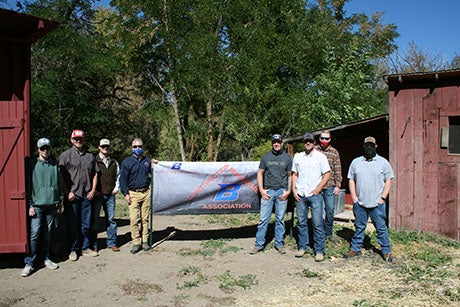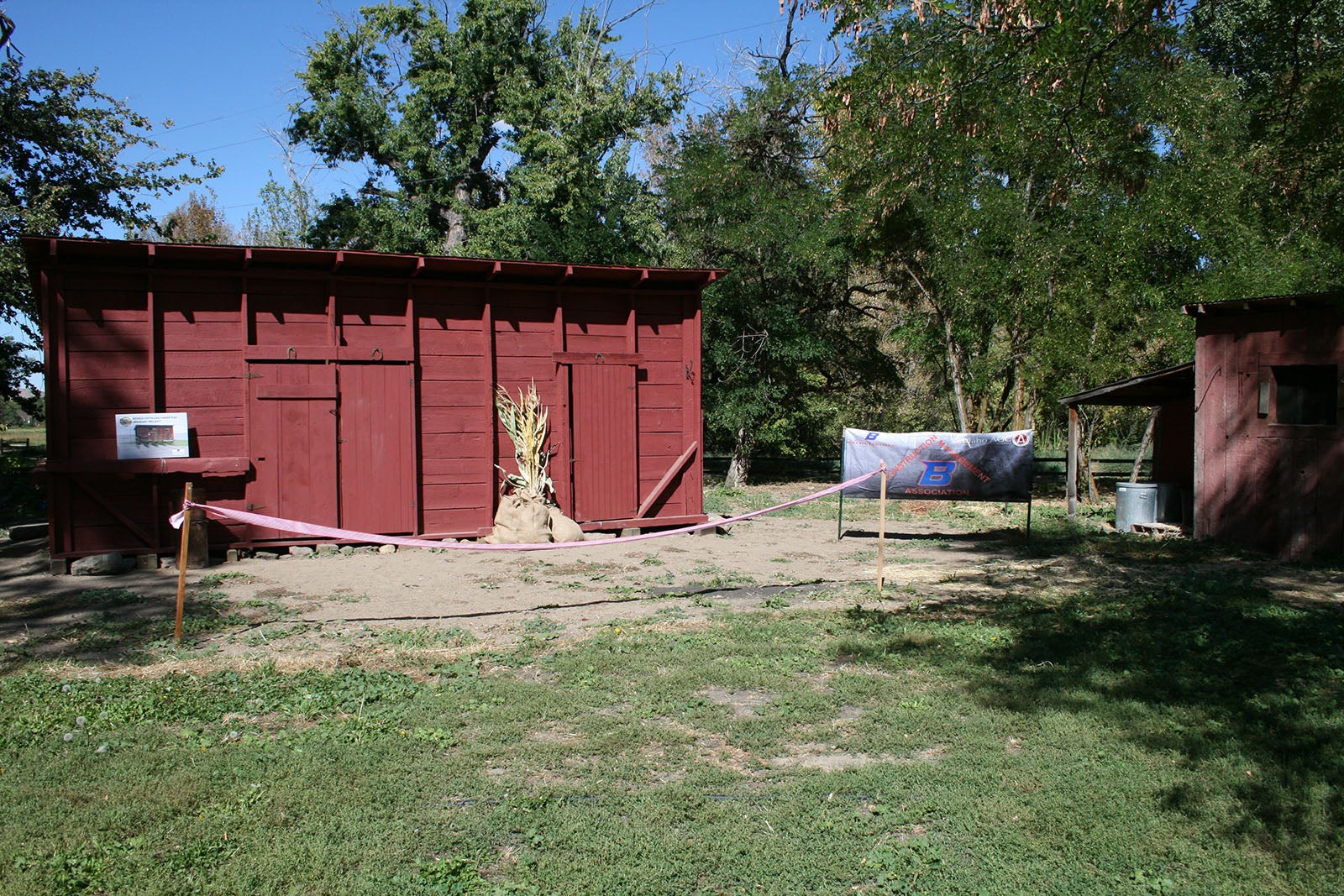Dry Creek Granary Restoration

A year ago, the DCHS partnered with Boise State University’s Construction Management Association (CMA) to preserve and restore this fragile and historically important Granary at the Schick-Ostolasa Farmstead. Previously, the CMA and its chairman, Dr. Casey Cline, earned an Orchid Award for their reconstruction of the historic guard tower at Minidoka National Historic Site; this fall marked the dedication on the transformation accomplished on this hand-made granary that dates to the early 1870s. As a result of their efforts, the project has earned the Excellence in Historic Preservation Award from Preservation Idaho’s Annual Orchid and Onion Awards.
In the early 1860s Phillip Schick, a young man originally from New York, arrived in the Dry Creek Valley near Boise in 1863 looking for a brighter future because of the Homestead Act. He built a home and developed his original 160-acre claim into a 400-acre farm. In 1920 the Schick family sold the farm to Frank Parsons, a banker, who hired Costantino Ostolasa to manage the farm. Costantino, originally from the Basque country of Spain, ran the farm until he died in 1956. The Ostolasa family continued to work the farm and live in the farmhouse until 2005. Soon after, a group of residents formed a nonprofit organization: The Dry Creek Historical Society.

This organization is dedicated to preserving part of Boise’s farming past. It oversees what is now called the Schick-Ostolasa Farmstead, including the old farmhouse, a detached kitchen, root cellar, saddle shop, wood shed, granary and large horse/dairy barn, all nestled among big trees on 2 acres near open space and foothills. All the buildings are now over 150 years old and some have begun to lean and are on the verge of falling over. The Dry Creek Historical Society partnered with Boise State University’s Construction Management Department and its chairman Casey Cline to undertake a process of preserving and restoring the Granary so that it will last another 150 years. The Granary has a support system on the outside of the building to keep the pressure of the stored grain from bursting the building from within and a cable through the interior of the building holding the structure together, according to the release. These features have been included in the historically accurate restoration.

Find more information about the project at the official website: DryCreekHistory.org.